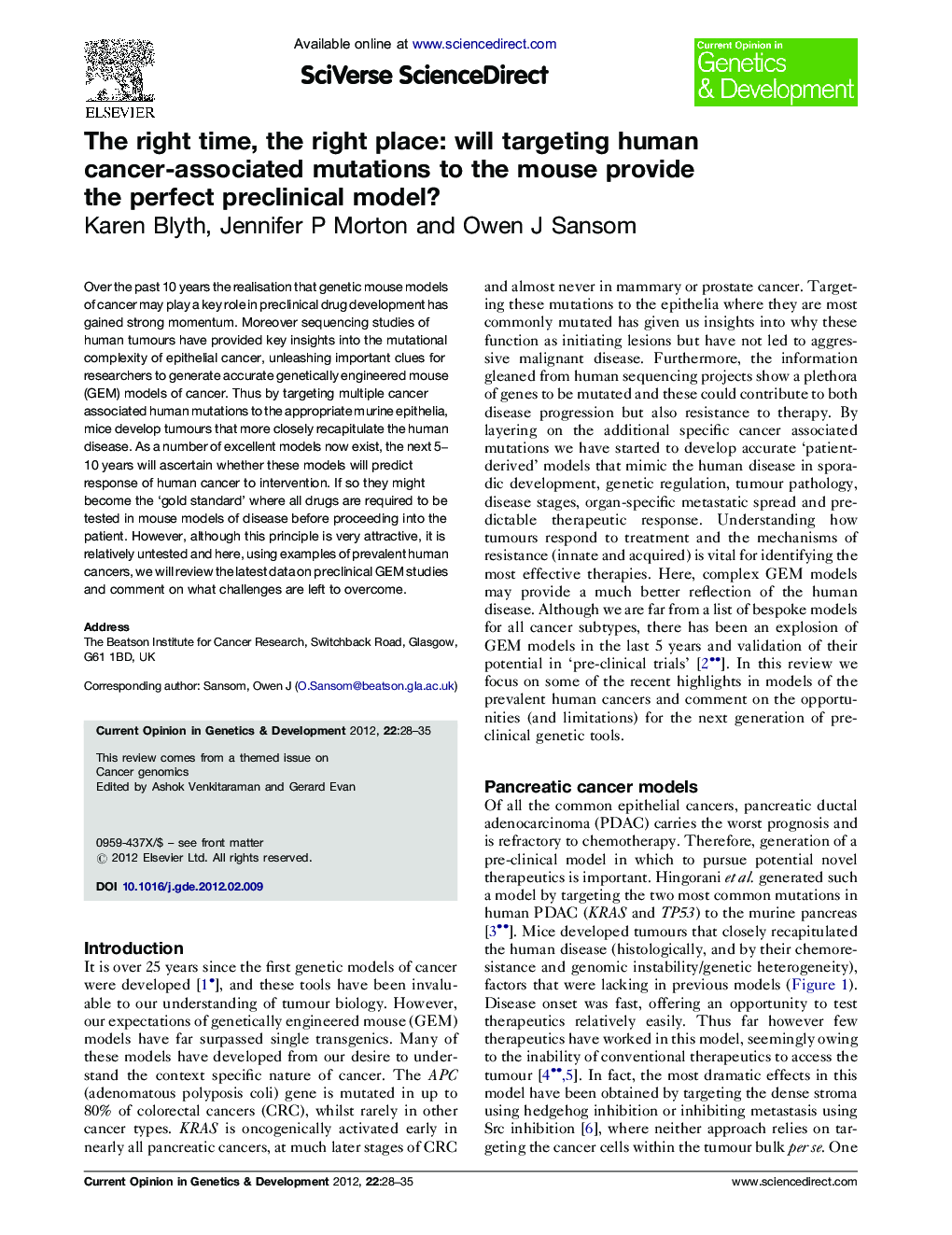| Article ID | Journal | Published Year | Pages | File Type |
|---|---|---|---|---|
| 5893686 | Current Opinion in Genetics & Development | 2012 | 8 Pages |
Abstract
Over the past 10 years the realisation that genetic mouse models of cancer may play a key role in preclinical drug development has gained strong momentum. Moreover sequencing studies of human tumours have provided key insights into the mutational complexity of epithelial cancer, unleashing important clues for researchers to generate accurate genetically engineered mouse (GEM) models of cancer. Thus by targeting multiple cancer associated human mutations to the appropriate murine epithelia, mice develop tumours that more closely recapitulate the human disease. As a number of excellent models now exist, the next 5-10 years will ascertain whether these models will predict response of human cancer to intervention. If so they might become the 'gold standard' where all drugs are required to be tested in mouse models of disease before proceeding into the patient. However, although this principle is very attractive, it is relatively untested and here, using examples of prevalent human cancers, we will review the latest data on preclinical GEM studies and comment on what challenges are left to overcome.
Related Topics
Life Sciences
Biochemistry, Genetics and Molecular Biology
Developmental Biology
Authors
Karen Blyth, Jennifer P Morton, Owen J Sansom,
